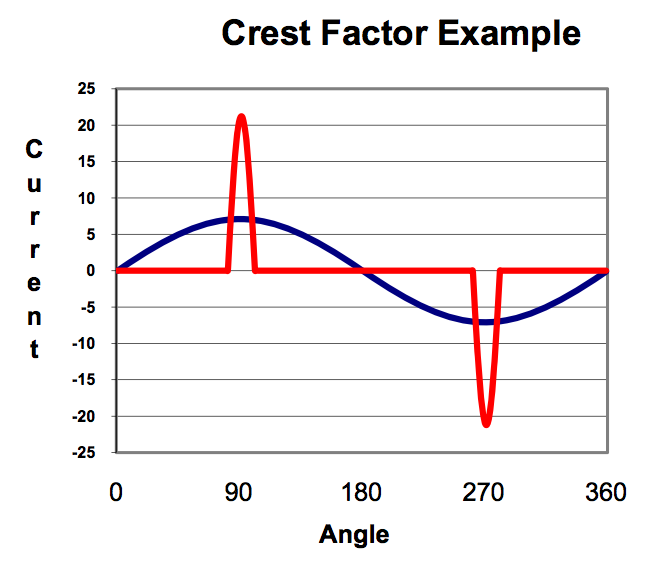Programmable AC power sources are primarily used to provide a low distortion, precisely controlled sinusoidal voltage to a unit under test, but some AC sources, such as the California Instruments I-iX Series II, perform measurements as well. Part 1 describes the benefits of using sources for measurement and how to make voltage and current measurements. Part 2 describes how to make frequency and power measurements. In Part 3, we'll discuss how to make power factor and crest factor measurements using an AC power source.
Power factor
Power factor is the ratio between true and apparent power. When the voltage and the current are both sinusoidal, the power factor is equal to the cosine of the phase angle between them. More often than not, however, the current contains higher order harmonics and determining the power factor is more complex. To determine the power factor, the AC source must have the ability to measure RMS voltage, RMS current and true power in order to accurately calculate power factor.
Since the true power can never exceed the apparent power, the power factor is always less than or equal to one. While the power factor does not provide any information about the phase shift between the voltage and current, a sign is often used to indicate whether the current is leading or lagging the voltage.
Note that the power factor is a ratio between two measurements, one of which (VA) is the product of two other measurements. This has an impact on the accuracy with which power factor can be measured. If the power level of the EUT is low, percent of scale errors in the current and power measurements will impact the accuracy of the calculated power factor. Published accuracy specifications for power factor measurement may only apply above a certain current or power level.
Crest factor
Crest factor is the ratio between the peak current and the RMS current drawn by a load. To measure crest factor, the AC source measurement system must be able to measure the true RMS current as well as the peak current. Some AC Sources such as the California Instrument 5001iX offer both single shot peak current and repetitive peak current modes. Single shot peak current mode is more suitable for determining an EUT’s inrush current and should not be used to determine crest factor. The repetitive peak current is normally used to calculate the crest factor.
 These two waveforms both have an rms current of 5 A, but their crest factors are very different.
These two waveforms both have an rms current of 5 A, but their crest factors are very different.
When the load current is purely sinusoidal, the crest factor is equal to the square root of two. Any distortion of the AC current will often result in higher crest factors. High crest factor put more stress on AC source because the source must provide the large instantaneous currents associated with the distorted current waveform.
Most AC Sources have a maximum crest factor specification. The ac power source measurement range for crest factor specified generally also applies to the RMS current measurement. Most RMS current measurement systems have a limited crest factor range. This means that the RMS current measurement accuracy specifications may not apply if the current being measured has a crest factor that exceeds this rating.
For more information, contact AMETEK Programmable Power Sales at 858-458-0223 or email the Sales Department at sales.ppd@ametek.com.




